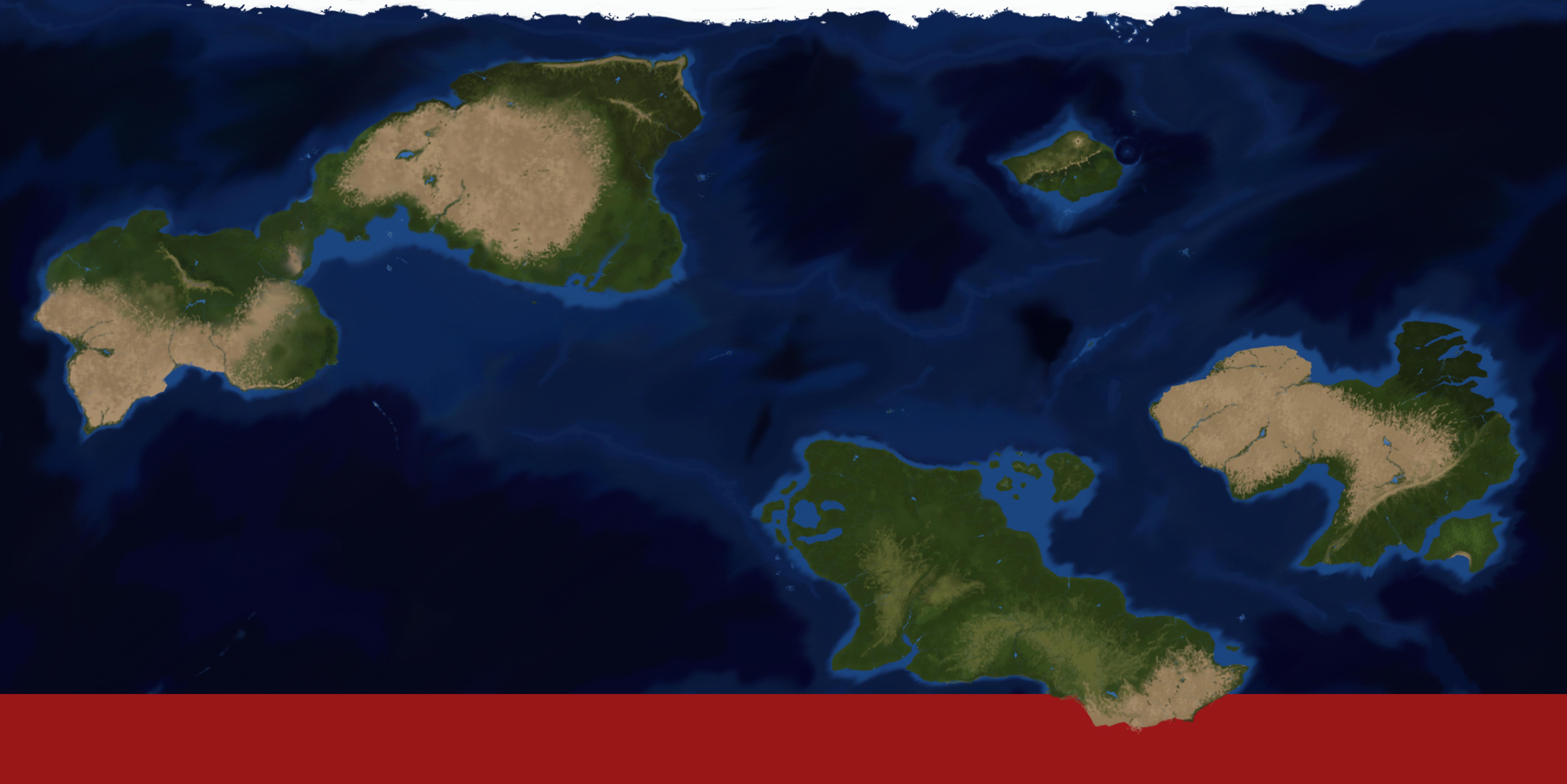Lizard's Archipelago Javelin Flapper
Tenuivelis megalodontus is an Esavelid Quadratocephaloid amphibian from the open waters of the south Nuwadi Ocean.
The animal, like many other members of its order, lives a gregarious lifestyle in medium to large shoals constantly moving from a floating forest to the next in large-scale migration patterns all year long.
This peculiar species adapted to the cold waters it lives in by evolving an extra thick third skin layer, keeping the animal warmer and helping heating up the water in the second skin layer.
This docile species is a major food source for the populations of the Lizard's archipelago, where it is most abundant, but also for the south cape of New Japan and occasionally the Leviathan Islands, where the species migrates to and from during the spring and summer times.
Starting from the Autumn the species will progressively reduce its range to converge in the waters around the Lizard's archipelago to mate and build up fat in the third layer by feeding on the extremely nutrient-rich fire algae growing around the islands.
The two large Display teeth growing from the jaw are used in sexual selection, while the two smaller ones on the distal end of the dentary are used by the animal to scrape off the plants it feeds on from their root when feeding on sessile plantlife.
T. megalodontus can be easily found in markets of the southern hemisphere, mostly coming from farms situated in the south of New Japan or from the northern hemisphere, where they are bred in captivity to help sustain local populations along the coasts of the Hetherian Ocean, otherwise poor in edible fauna.
The animal can be grilled or oven-baked with a vast array of condiments and synthetic lemon flavouring; in countries such as the Leviathan Islands it is accompanied with mushed Tooth shrimps but consuming the parasite elsewhere on the planet is illegal, restricting the practice only to those few places where it's not.
Basic Information
Anatomy
- Head rounded and high, euabsorbed armour quadrate.
- Two large display teeth originate from the center point of the dentary bone.
- Body rounded and moderately long.
- Dorsal fins paired.
- Dorsal I fins very large, growing at the same height of the Pectoral and Anal I fins.
- Dorsal II & Anal II fins reduced and spear shaped.
- Gill Tail visibly thinner than the body, ending in a high Gill Fan with moderate Caudal fins.
- Gill fan high compared to the body ending in a steep caudal drop.
Genetics and Reproduction
Promiscuous species.
The species reproduces in the Autumn and Winter months when they gradually move towards the nesting sites around the Lizard's Archipelago.
As with many other Selenopiscoids, the two genders enter heat at different times during the mating period, with males often being first.
Males enter heat a few days before the females, entering an active state where the patterning becomes brighter and the parapenis hangs out of its cavity, swollen and bright blue.
Active females can be easily recognized by the bright flashes of colour emitted near the entrance of the duct, and sudden growth of a forehead bump.
Males decide mating orders by comparing Length and colour of the parapenile extension.
The first male will inseminate a whole egg sac, while the other males will have their seed mixed in with the others in mixed sacs.
A single male can mate with multiple females over a single mating season.
The eggs are laid along the stems of large algae.
Growth Rate & Stages
Ontogenesis in the species visible.
Hatchlings are born with slender bodies, similar to more basal Selenopiscoids.
Loss of natal aculeus a few hours after birth.
Ecology and Habitats
Epipelagic species found at depths between 3 and 50 m.
Lives in open waters, making stops to forage in floating forests.
Dietary Needs and Habits
Herbivorous species feeding on algae from floating forests; it will come close to the shores of the Lizard's archipelago during the winter to breed and forage on Fire Algae.
Sometimes hunts small invertebrates or cnidarovertebrates as a protein supplement, especially in the Winter season.
Biological Cycle
Periannial species that changes its range seasonally.
No dips in activity year-long.
Additional Information
Social Structure
Gregarious creature found living in shoals of medium to large size.
Will interact with conspecifics through contact more than through verbal communication.
Daily grooming activities between the various specimens help them keep their skin clear from parasites while strengthening bonds between conspecifics.
Domestication
The species is not very common in the pet trade but can be found in specialized dealers.
Recommended to intermediate owners with at least a bit of experience in keeping Selenopiscoids or other cold-water species.
Uses, Products & Exploitation
Of importance in the food industry, especially in the northern hemisphere where most of the local ecosystems are rendered inedible by Cinerichthyd amphibians.
The animal is relatively easy to breed in captivity, making it ideal for industrial meat productions.
Geographic Origin and Distribution
South Nuwadi Ocean from the Leaviathan Islands to the Lizard's archipelago, where the biggest populations are found.
Perception and Sensory Capabilities
Good eyesight and chemiolocatory abilities
Symbiotic and Parasitic organisms
Afflicted by Intestinal Tube Worms and False tooth parasites on the display teeth, although the latter is uncommon in the species.
Sometimes carriers of diseases of the Filtration sac.
Scientific Name
Eoichthyia; Tartarosomnia; Rotunducephalidae; Gladiopinneioidea; Quadratocephaloidea; Selenopiscoidea ; Esavelidae; Tenuivelis; T. megalodontus
Lifespan
6 Years
Conservation Status
Least Concern: no measures underway to protect the species.
Population trend: INCREASE
Average Weight
1-3 kg
Body Tint, Colouring and Marking
Silver to greyish-azure body, lighter pattern on the back up to the second Dorsal pair and as a band along the body.
Finned tipped yellow to sand coloured.
Remove these ads. Join the Worldbuilders Guild












Comments